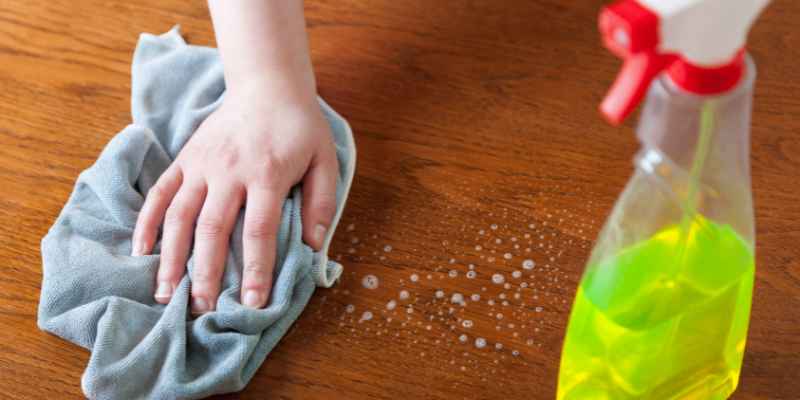Yes, you can use car wax on wood for beautifying and protecting the surface. Applying car wax on wood can enhance its appearance and provide a protective layer against wear and tear.
Car wax can help bring out the natural shine of wood furniture or flooring, making it look cleaner and more polished. Additionally, the wax can create a barrier that helps repel water, dust, and other contaminants, ultimately extending the lifespan of the wood.
However, it is important to test a small, inconspicuous area first to ensure compatibility and avoid any damage. Overall, using car wax on wood can be a simple and effective way to maintain and enhance the beauty of your wooden surfaces.
Can You Use Car Wax On Wood?
Using car wax on wood surfaces is a topic often debated among DIY enthusiasts and homeowners. Some believe that the properties of car wax can bring out the shine and protect wood, while others are concerned about its compatibility.
Types Of Car Wax
Car wax comes in various types, including carnauba, synthetic, and spray waxes. Each type has its unique formulation and application method, offering different levels of protection and shine.
Properties Of Car Wax
Car wax is known for its protective properties against UV rays, water, and dirt. It creates a barrier on the surface that enhances shine and repels liquids. However, the specific qualities of car wax may not be ideal for all types of wood.
In conclusion, before using car wax on wood, it’s crucial to consider the type of wood and the ingredients in the car wax. Always test on a small, inconspicuous area first to ensure compatibility.
Effects On Wood
Rejuvenate wood surfaces using car wax to add shine and protection. Wax creates a barrier against moisture and dust, enhancing the wood’s appearance and durability. However, avoid using wax on wood floors as it can make them slippery.
Using car wax on wood may seem unconventional, but it can actually have some surprising effects. Let’s explore the various ways that applying car wax to wood can enhance its appearance and protect it from moisture.
Enhanced Shine
One of the notable benefits of using car wax on wood is the enhanced shine it provides. Car waxes typically contain polishing agents that help remove imperfections and create a smooth, glossy surface. When applied to wood, the wax can bring out its natural luster, making it appear brighter and more vibrant.
The wax forms a protective layer on top of the wood, allowing it to reflect light more effectively and creating a beautiful shine. Whether you’re working with wooden furniture, countertops, or even floors, applying car wax can give them a polished finish that catches the eye.
Protection From Moisture
In addition to the appealing shine it offers, car wax’s hydrophobic properties make it effective at repelling moisture on wood surfaces. By creating a waterproof barrier, the wax helps prevent water from seeping into the wood pores, which can lead to swelling, warping, or rotting over time.
This moisture-resistant quality is particularly advantageous for outdoor wooden furniture or other wood exposed to high humidity levels. The wax acts as a protective shield, keeping the wood dry and prolonging its lifespan.
Moreover, car wax also helps guard against stains and spills to an extent. It forms a barrier that makes it easier to wipe away liquids before they can penetrate the wood’s surface and cause irreversible damage.
Application Process
Applying car wax on wood surfaces is not recommended due to its potential to cause damage. Instead, use specialized wood polish or wax to maintain and enhance the appearance of wooden furniture and fixtures. Always follow the appropriate application process for the best results and to avoid any potential harm to the wood.
Surface Preparation
Before applying car wax on wood, it is crucial to properly prepare the surface. This ensures optimal adhesion and a smooth finish. Start by cleaning the wood surface thoroughly using a mild detergent and water solution. Remove any dirt, dust, or grime that may be present on the wood. Rinse the surface with clean water and allow it to dry completely.
Next, inspect the wood for any imperfections or rough spots. If there are any, gently sand them down using fine-grit sandpaper until the surface is smooth and even. Be sure to remove any sanding residue with a damp cloth, as it can interfere with the wax’s ability to bond to the wood.
Wax Application Method
Once the wood surface is clean and smooth, you can proceed with the wax application process. Here’s a step-by-step guide:
- Choose a high-quality car wax that is suitable for wood surfaces. Look for a wax that contains natural ingredients and is specifically formulated for wood protection.
- Using a clean, soft cloth or an applicator pad, apply a thin layer of wax to the wood surface. Work in small sections to ensure even coverage.
- Gently rub the wax into the wood using circular motions. This helps the wax penetrate the wood pores and create a protective barrier.
- Allow the wax to dry according to the manufacturer’s instructions. This typically takes around 10-15 minutes.
- Once the wax is dry, use a clean cloth to buff the surface. This will remove any excess wax and enhance the shine of your wood.
- For best results, repeat the wax application and buffing process at regular intervals to maintain the protective layer and keep your wood looking its best.
Remember, when using car wax on wood, it is important to follow the manufacturer’s instructions and test the product on a small, inconspicuous area of the wood first. This will help ensure compatibility and avoid any potential damage or discoloration.

Considerations
Before using car wax on wood surfaces, there are several important factors to consider.
Wood Types To Avoid
Not all wood types are suitable for car wax application. Avoid using car wax on porous or unfinished woods.
Frequency Of Application
The frequency of applying car wax on wood depends on various factors such as usage and exposure to elements.
Comparative Analysis
When it comes to taking care of wood furniture and surfaces, various products and techniques are available. One common question that arises is whether car wax can be used on wood. In this comparative analysis, we will examine the difference between car wax and wood wax and compare their longevity.
Difference From Wood Wax
Wood wax is specifically designed to enhance the natural beauty of wood, providing protection and nourishment to the surface. Car wax, on the other hand, is formulated to protect and enhance the appearance of vehicle paint.
| Wood Wax | Car Wax |
|---|---|
| Designed for wood surfaces | Designed for automotive paint |
| Enhances natural wood grain | Enhances gloss and shine on cars |
| Provides nourishment to wood | Provides protection to automotive paint |
As we can see from the comparison table, wood wax and car wax have different purposes and compositions. Using car wax on wood may not offer the same level of nourishment and protection as wood wax.
Longevity Comparison
In terms of longevity, wood wax is typically formulated to withstand frequent cleaning, dusting, and general wear and tear. It can provide long-lasting protection to wood surfaces, ensuring they remain in top condition for a considerable amount of time.
Car wax, on the other hand, is generally designed to withstand exposure to harsh weather conditions and environmental elements. While it may offer some level of protection to wood surfaces, its durability on wood may be compromised due to factors such as moisture and constant indoor use.
Therefore, it is recommended to use wood wax specifically formulated for wooden surfaces to ensure optimal protection and longevity.
Overall, while car wax and wood wax share similarities in appearance and texture, they are formulated for different purposes. Wood wax provides the necessary nourishment and protection for wood surfaces, while car wax is designed for automotive paint. When it comes to using wax on wood, it is best to choose a product specifically formulated for wooden surfaces to ensure long-lasting results.
Myths And Misconceptions
There are several myths and misconceptions surrounding the use of car wax on wood surfaces. Many people believe that car wax can damage the wood or affect its staining. However, it is important to separate fact from fiction when considering the use of car wax on wood furniture or other wooden items. Let’s debunk these myths and explore the truth about car wax and wood.
Damage To Wood
One common myth is that car wax can damage the wood. However, this is not entirely true. Car wax is not designed to harm wood surfaces. If applied correctly, car wax can actually protect the wood by providing a protective layer that helps to prevent stains, scratches, and moisture damage.
It’s essential to choose a high-quality car wax that is suitable for wood. Always read the product instructions and ensure that the wax is specifically formulated for use on wood.
Tip: Look for car waxes that contain natural ingredients such as beeswax or Carnauba wax, as they are gentle on wood surfaces.
Affect On Wood Staining
Another misconception is that car wax can negatively affect wood staining. While it is true that car wax can create a thin barrier on the wood surface, it does not significantly affect the staining process. In fact, car wax can enhance the appearance of stained wood by giving it a glossy and polished look.
Tip: If you are planning to apply a stain to your wood surface, ensure that you clean and prepare the wood properly before applying any car wax. This will help the stain to penetrate the wood effectively and ensure a smooth finish.
However, it is important to note that car wax should not be used as a substitute for proper wood maintenance. Regular cleaning and polishing with specialized wood products are still necessary to keep the wood in optimal condition.
Summary
- Using car wax on wood surfaces does not cause damage to the wood if applied correctly.
- Car wax can enhance the appearance of stained wood by giving it a glossy and polished look.
- Choosing a high-quality car wax formulated for wood is essential to ensure optimal results.
- Remember, car wax should not replace regular wood maintenance and care.
Expert Recommendations

Professional Woodworker Insights
Woodworking professionals endorse using car wax on wood for added protection and shine.
Product Recommendations
Opt for high-quality car waxes with natural ingredients for best results on wood surfaces.
Frequently Asked Questions Of Can You Use Car Wax On Wood
Can You Use Car Wax To Finish Wood?
Yes, you can use car wax to finish wood. It creates a protective layer and adds shine. However, be sure to choose a wax suitable for wood surfaces. Regular maintenance is recommended.
What Kind Of Wax Can You Use On Wood?
You can use beeswax or carnauba wax on wood furniture for a natural and protective finish.
Does Wax Stay On Wood?
Wax can stay on wood surfaces, forming a protective layer that enhances its appearance and durability.
Does Turtle Wax Work On Wood?
Yes, Turtle Wax can be used on wood surfaces to provide a protective, shiny finish.
Conclusion
Using car wax on wood can provide protection and shine. However, consider the type of wood and wax to avoid any damage. Experiment on a small area before full application for best results. Ultimately, proper care and maintenance will ensure your wood furniture stays in top shape.


